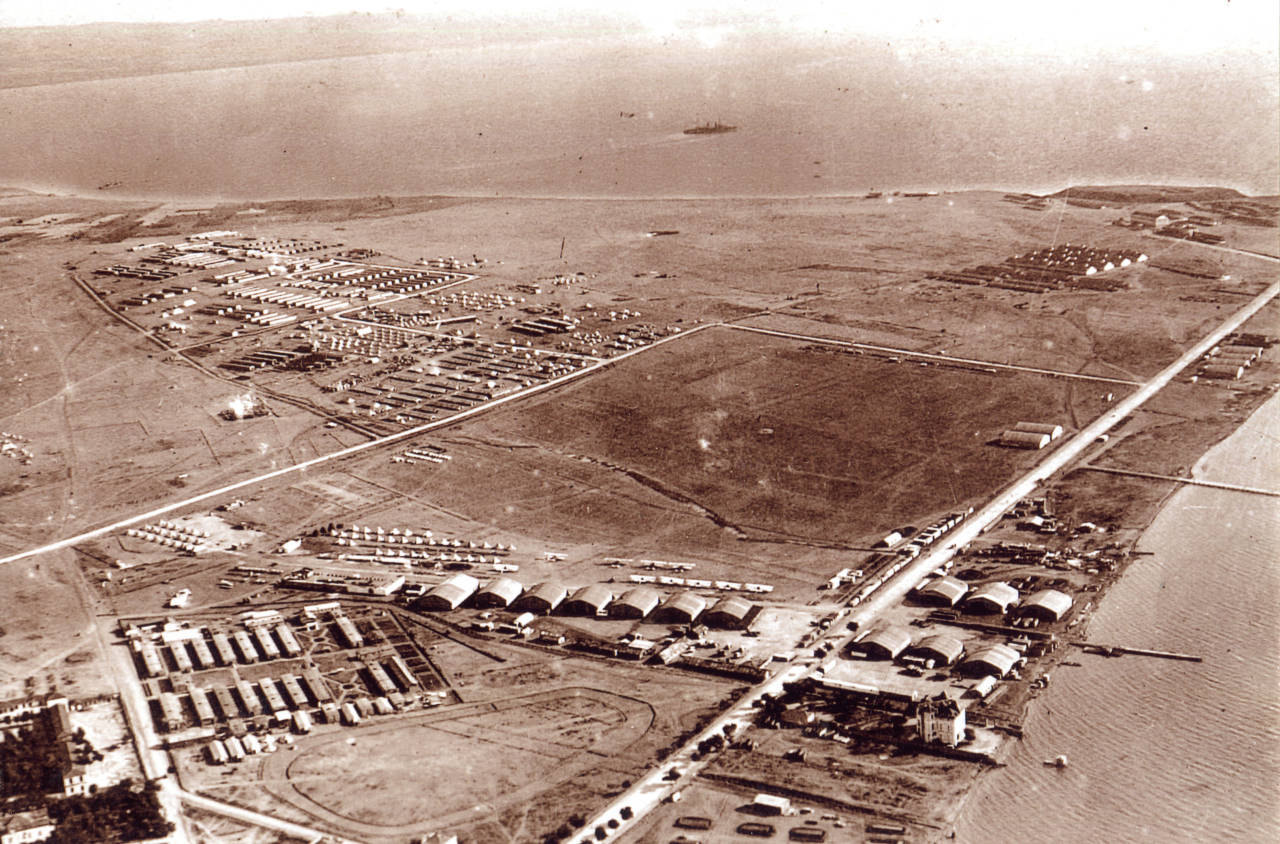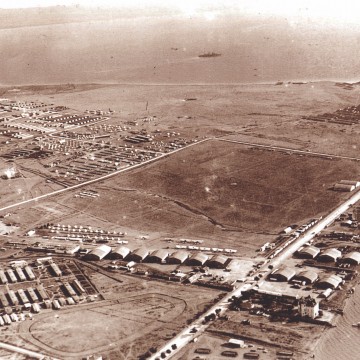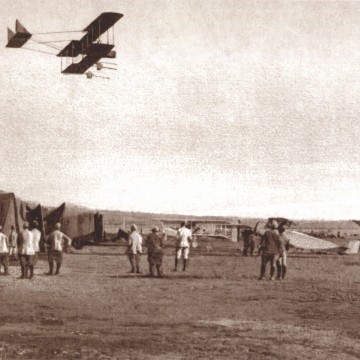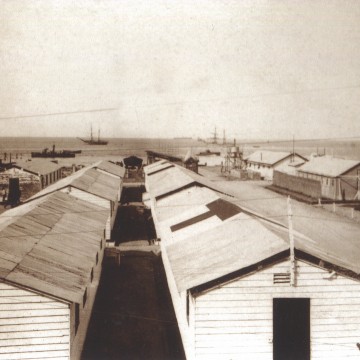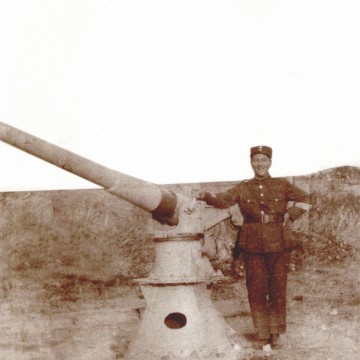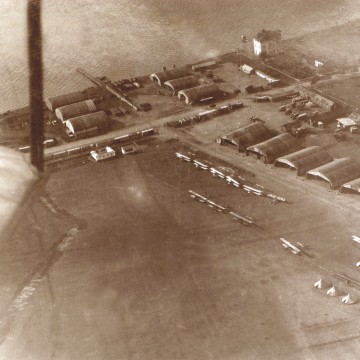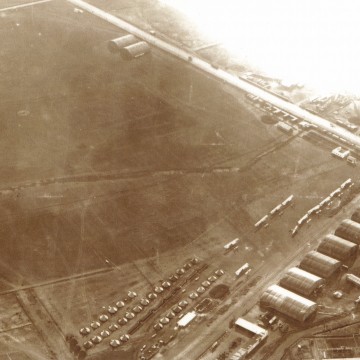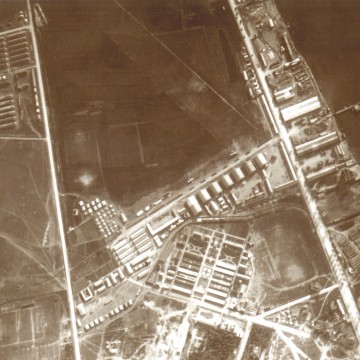The Kodras barracks
Ottoman period
The history of the area currently occupied by the Kodras barracks is closely intertwined with military life. During the Ottoman period, the most extensive barracks on the Balkan Peninsula were established here to serve as the base of the Ottoman cavalry. However, after the liberation of Thessaloniki by the Greek army at the end of October 1912, the area acquired a new significance. According to the protocol of surrender of the city, which was signed by Crown Prince Constantine as commander-in-chief of the Greek army and Hasan Tahsin Pasha (command the VIII Provisional Corps at Thessaloniki), the Ottomans had to lay down their arms and retire to specific locations. One group of prisoners would be transferred to Karabournou and the rest to the “Toptsi” artillery barracks.
The captured Ottoman soldiers numbered about 25,000. A significant number were placed under strict guard at the former Ottoman camp in Karabournou and the surrounding area. The rest were housed in barracks across from the General Headquarters and the area around Villa Allatini. Since 1908, all this area (2965 acres from Karabournaki to the Allatini Mills) belonged to Athanasios Serefas, who had served as Greek consul in Thessaloniki until 1912 (and became mayor of the city after liberation).
The large number of prisoners and the scarcity of food after the relocation of many Muslim refugees to Thessaloniki caused tensions and raised concerns among the civilian population and the Greek authorities attempting to organise a new administrative structure in the recently liberated areas. In addition, many Turkish soldiers roamed the streets hungry, bedraggled, and armed. The situation was intolerable because it created unpleasant situations that could humiliate the Greek administration (especially since the Bulgarians, who had their own plans on Thessaloniki, did not miss any opportunity to foster unrest). As a result, the authorities decided to transfer the Turkish prisoners to “old Greece”, despite protests by Hasan Tahsin Pasha. They implemented the decision quickly. On October 31, 1912, the prisoners began to be transferred and distributed in detention camps set up in small and large urban centres in southern Greece.
First World War
During the First World War, Kalamaria was transformed into one of the largest camps of the Entente allies. From the beginning of 1916 until the end of the war (1918), the region hosted thousands of French and British soldiers who landed in Macedonia to assist Serbia, struggling to defend itself against the combined forces of Germany, the Austro-Hungarian Empire, and Bulgaria. The military installations in Kalamaria consisted of 150 large shanties that stretched over a large area to meet the war needs of the Allies in the long-running bloody conflict that shook Europe.
To serve the everyday needs of the camp, the Anglo-French built a railway line that connected Kalamaria with Thessaloniki. The line started from the current Transito area of the port of Thessaloniki, crossed Nikis Avenue and ended behind the existing facilities of the War School at the Agricultural School. After the end of the war (and until 1923), this line was used by the Greek Railways.
Trains played a crucial role in transporting supplies, soldiers, and the wounded. The wholesome local climate accounts for establishing many military hospitals in the Kalamaria camp. The huts were often full of wounded soldiers and men suffering from malaria, a disease that was a real scourge at the time.
In addition to the hospitals, the camp included an airbase on Themistokli Sofouli Street. The base had a runway and an aircraft repair shop. The staff resided in huts constructed at a relatively short distance, at the intersection of Themistokli Sofouli and Logotheti streets (where the famous “Koniordeika” were built in 1922-1923, three identical houses erected on behalf of the Koniordos brothers).
Several shanties stood along the current Kathigitou Rossidou Street (from the Prefecture to the sea) to serve the needs of the airbase. Another emblematic building, Villa Rahmi Bey, rose near the coast. The British requisitioned the house to accommodate aviators, giving the building its popular name, “The Aviators’ Villa”. Unfortunately, the villa was demolished in the late 1970s. Today Express Service Building 2 occupies the site.
A base for hot-air balloons operated in Mikro Karabournou, and an airport was built near the beach of Finikas, which was called Mikra back then. The Anglo-French had also built ammunition depots (a cartridge factory in present-day Dalipi camp), a quarantine station, staff facilities, equestrian training installations (the building is located in the Kodras barracks and has been declared a protected building) and an animal hospital. The aviation training base in Nea Krini remained in operation until 1933. Today it has been replaced by the stadium of the Iraklis Football Club.
